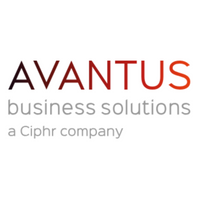3 key components of an age-diverse benefits programme
Multi-generational workforces are reshaping the way businesses think about rewards and benefits programmes.
According to the CIPD, 32.6% of the UK workforce is aged over 50, up from 21% in the early 1990s.
Yet, despite this growing number of so-called ‘silver workers’, it’s still more challenging for older people to find employment than other age groups, often because of employer bias, discrimination, or general unpreparedness to meet their changing needs.
By considering age in employee benefits packages, companies can attract age-diverse talent, foster an inclusive culture and reap the rewards of a multi-generational workforce.
The benefits of an age-diverse workforce
Age-diverse teams unite people with varied skill sets, networks, and perspectives. This combination of wisdom and youthful enthusiasm can yield significant benefits, including better decision-making and performance.
Companies with diverse teams are more likely to deliver higher financial returns than those without, while studies show that being part of a mixed-aged workplace can increase motivation and loyalty.
To maximise the potential of a multi-generational workforce, companies should design a flexible reward and benefits strategy suitable for the full spectrum of age groups.
But how do you do this while meeting the differing expectations of Baby Boomers, Gen X, Millennials, and Gen Z?
Start by looking for where needs overlap. Here are the three cornerstones to implement for an effective, age-diverse benefits package.
Key components of an age-diverse benefits programme
1. Flexibility matters, no matter the age
As people age, their priorities change and they don’t always fit neatly into the traditional 9 to 5.
Whether it’s caring for young children or older relatives, balancing work and studies, or managing a chronic illness or disability, flexibility can be crucial to employee wellbeing and satisfaction.
If you’re one of the 24% of companies not offering flexible working, you could see a multi-generational talent exodus. According to the CIPD, more than 4 million people have changed careers due to a lack of flexibility at work.
Flexible working arrangements like flexi-time, hybrid and working from home options, or compressed working weeks, help attract and retain an age-diverse workforce.
2. Support mind and body
Many popular employee health and wellbeing benefits focus on lifestyle habits (nutrition, exercise, practising mindfulness). However, as more people work later in life, benefits must also consider age-related events.
Employees face different challenges as they age and your benefits package needs to be tailored to help them overcome these challenges.
Support for potentially severe and life-changing circumstances, such as pregnancy loss, chronic health conditions, disabilities, and menopause transition, should be offered alongside standard workplace health benefits.
Demonstrating that you’re set up to support employees as they age could boost loyalty and help you retain talent during tumultuous life events.
3. Remove the taboo from money talk
While wealth is a contentious issue between generations, not talking about money is a uniting characteristic – and one of the biggest obstacles to financial wellbeing.
Many older people still see talking openly about money as a taboo. Meanwhile, younger people often avoid speaking about money due to a lack of experience.
Your benefits package should break this taboo and relieve stress about money by offering education and advice to improve financial literacy.
For example, calculation tools could help employees check current pension contribution levels and forecast retirement income, while jargon-free guides explain complicated terminology.
Workers who can manage their finances tend to be healthier, happier and more engaged, which can lead to higher productivity.
The future of rewards and recognition
How you recognise hard work must connect with employees of all ages. One-size-fits-all reward schemes no longer work.
Thankfully, emerging technologies are making it easier to deliver rewards that foster inclusivity by offering something for everyone, from real-world experiences and tangible gifts to charitable donations and environmental, social and governance initiatives.
Implementing this technology requires careful consideration. Younger employees will expect a mobile-first solution and peer-to-peer recognition as standard.
Older staff members may need additional training to engage with a digital rewards platform and still appreciate praise in person. Striking the balance is vital.
With age diversity comes greater responsibility for a reward and benefits strategy that suits everyone. Catering to different demographic groups and generational needs will mark you as a progressive company of choice.
FlexGenius, powered by Avantus, is a flexible benefits platform for incorporating all your employee benefits in one place. The customisable software allows you to tailor programmes to a multi-generational workforce and adapt them as your employee demographic evolves.
Supplied by REBA Associate Member, Avantus
Flexible Benefits & Technology specialist providing online, highly configurable platforms to Customers and Intermediaries worldwide.








